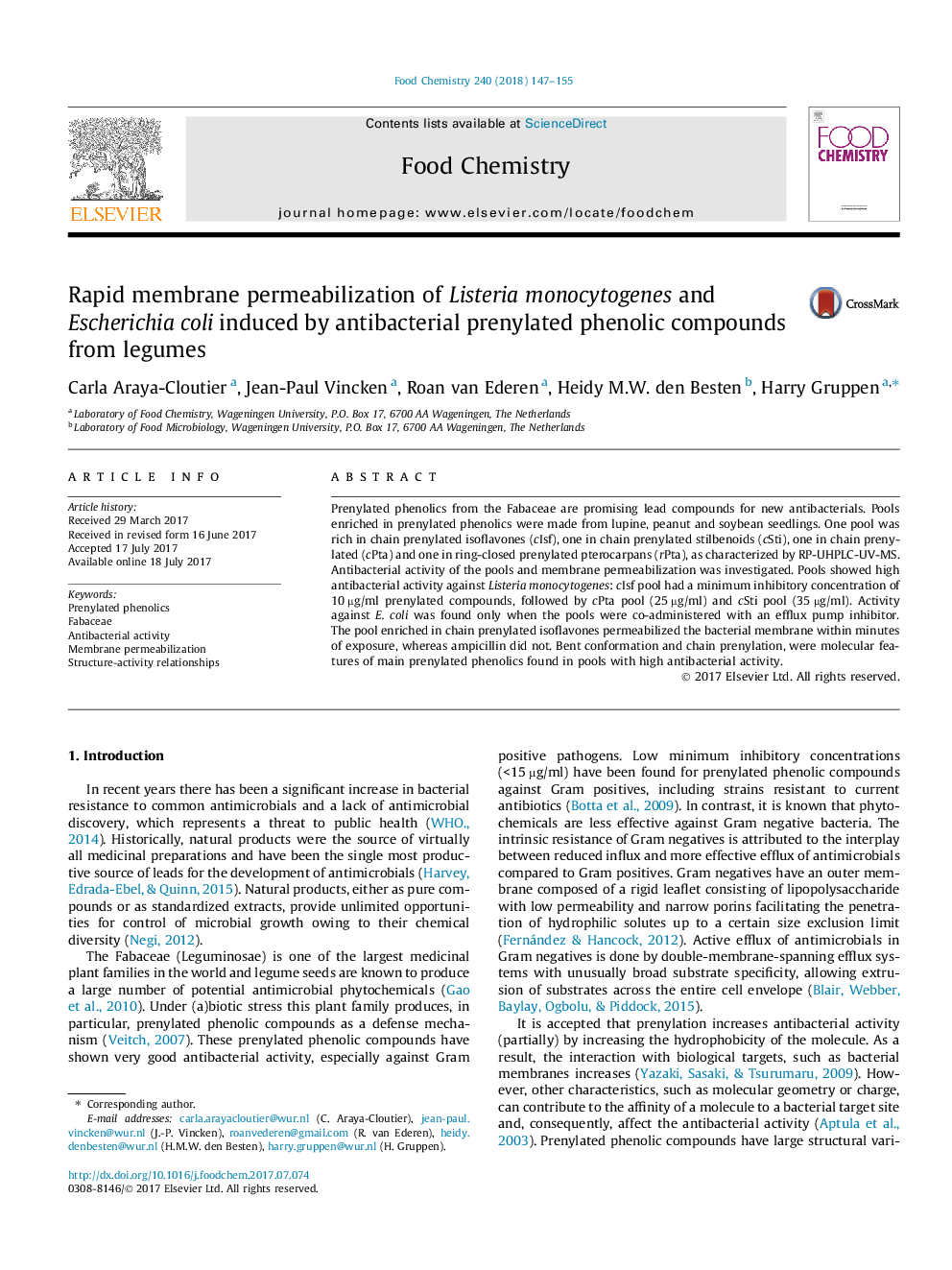| Article ID | Journal | Published Year | Pages | File Type |
|---|---|---|---|---|
| 5132451 | Food Chemistry | 2018 | 9 Pages |
â¢Prenylated phenolics from legume seedlings were enriched and analysed.â¢Different subclasses of prenylated phenolics were annotated by RP-UHPLC-MS.â¢Prenylated isoflavones cause fast membrane permeabilization of Gram+ and Gramâ bacteria.â¢Prenylated compounds with an efflux pump inhibitor are effective against E. coli.â¢Bent skeleton and chain prenylation potentially important structural features.
Prenylated phenolics from the Fabaceae are promising lead compounds for new antibacterials. Pools enriched in prenylated phenolics were made from lupine, peanut and soybean seedlings. One pool was rich in chain prenylated isoflavones (cIsf), one in chain prenylated stilbenoids (cSti), one in chain prenylated (cPta) and one in ring-closed prenylated pterocarpans (rPta), as characterized by RP-UHPLC-UV-MS. Antibacterial activity of the pools and membrane permeabilization was investigated. Pools showed high antibacterial activity against Listeria monocytogenes: cIsf pool had a minimum inhibitory concentration of 10 µg/ml prenylated compounds, followed by cPta pool (25 µg/ml) and cSti pool (35 µg/ml). Activity against E. coli was found only when the pools were co-administered with an efflux pump inhibitor. The pool enriched in chain prenylated isoflavones permeabilized the bacterial membrane within minutes of exposure, whereas ampicillin did not. Bent conformation and chain prenylation, were molecular features of main prenylated phenolics found in pools with high antibacterial activity.
